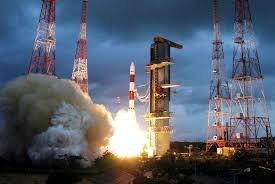SRIHARIKOTA, Jan 22: India is preparing to launch one satellite every month to meet growing needs from its space-based assets, including transponders and scientific instruments, a top space official said.
“We have started this year with the launch of the fifth navigation satellite, which is a great success as it was precisely injected into the intended orbit. We are lining up a series of satellites for launch in almost every month to meet the demand,” Indian Space Research Organisation (ISRO) chairman A.S. Krishna Kumar said here.
The state-run space agency is bracing up to launch two more navigation satellites in February and March, followed by earth observational, remote-sensing and communications-based spacecraft from its spaceport here, using one- to four-tonne rockets with indigenous cryogenic engines.
“We have a long way to go, as we have to first complete the constellation of seven regional navigation satellite system (IRNSS) in the next two months and embark on other missions to launch various types of satellites for multi-purposes,” Kumar told scientists at the mission control centre after the fifth satellite was precisely deployed in the intended orbit.
The space agency said later that the satellite (IRNSS-1E) was injected into an elliptical orbit at 20,655 km an apogee (away from earth) and 282 km perigee (nearer to the Earth) at an angle of 19.21 degrees to the equator and its intended orbit.
The organisation’s master control facility at Hassan, about 180 km from Karnataka, will conduct four manoeuvres to position the 1,425-kg satellite in the geo-synchronous orbit in the next two weeks.
“With this launch, we have proved again that our PSLV (polar satellite launch vehicle) workhorse is a reliable rocket to carry various types of satellites for diverse applications and needs across the country,” Kumar said.
Using strap-on boosters, the PSLV-C31 was the 33rd launch mission and 32nd successful launch consecutively since its first version blasted off over two decades ago in September 1993.
With the successful launch of the GSLV in August 2015, GSLV-Mark-III in December 2014 and GSLV-Mark II in January 2014, using indigenous cryogenic engine which runs in super-cooled temperatures, the space agency plans to launch one more GSLV-Mark III as its heaviest rocket this year to carry four-tonne satellites in the geo-stationary orbit, about 36,000 km from the earth.



























